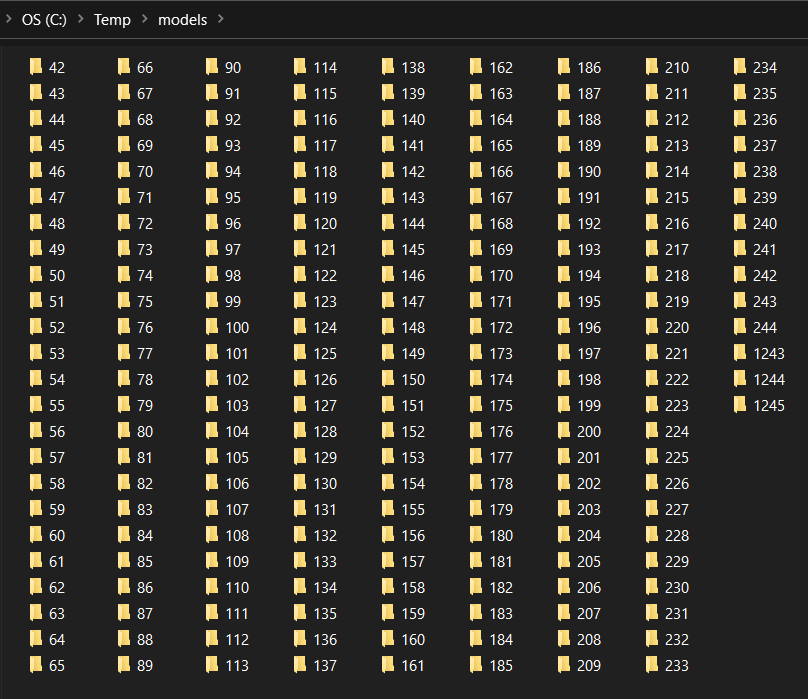3D CAD models associated to a Routine in CM4D are converted to a stream cache format. The model information is stored in the database and the model stream cache files are stored in a Model Directory on the HOOPS Communicator server. The models are then streamed from the HOOPS server to clients and rendered by the HOOPS Web Viewer on the client-side in CM4D Peruse. This requires the end client, the machine running CM4D Peruse in a web browser, to do the actual rendering the 3D model when it is loaded into the web viewer in CM4D Peruse.
Internet speed impacts the loading/rendering of the 3D model because the model is streamed to the client and rendered on the client machine. Server-side rendering (not available) would require very expensive server hardware.
The HOOPS Communication Server (HCS) connects to CM4D via the CM4D Results database connected through CM4D Peruse. When a model is requested by a client, the HCS checks the Model Directory for the requested model. From that directory, it streams the cache file to the client for rendering. The model directory is populated by CM4D via the StreamCacheSmith Service and CM4D Results database. The CM4D StreamCacheSmith Service must be installed on same machine as the HOOPS Communicator Server. Images transferred to the Results database cannot contain User Variables in the Image Path.
Automatic Conversion
CAD models associated to Routine data that is added or modified within the CM4D desktop applications are automatically handled by the CM4D Site database, which acts as a command center to send messages to the Results Sender service, which in turn sends the CAD image file through the StreamCacheSmith service for conversion to the HOOPS Stream Cache format and storage on the HOOPS server.

HOOPS in CM4D
The HOOPS 3D engine includes a number of applications which are used in different ways depending on the application:
- HOOPS Exchange (HE) - CM4D desktop applications that have the 3D view component (Classic, Interactive, Workcell) utilize HE to load 3D image files; supports many standard CAD formats. Used by HC to convert CAD file formats into stream cache format for storage on the HC server.
- HOOPS Communicator (HC) - The HC server uses file-based loading to facilitate the transfer of 3D models from CM4D to a format that is retrievable by the HWV components for client-side rendering (Peruse).
- HOOPS Web Viewer (HWV) - CM4D Peruse uses a 3D view component that loads models as in stream cache format; loaded from the HC server. Web browser must support WebGL.
Subroutine Images
Subroutines do not generate their own 3D models. Rather, Subroutines reference the models assigned to the Parent Routine(s). Models are converted to the stream cache format for Routines only to prevent data duplication in the Results database and stream cache files stored on the file server.
Manual Conversion
If something in a CAD file changes (value in the file), but does not change in relation to CM4D (file name or storage location), an automatic update to the converted stream format is not triggered. In this case, you can prompt a re-conversion manually in DataUtility.
In the Images search results, the Export to Results Database context menu option triggers the image to be sent through the StreamCacheSmith service for conversion into the HOOPS format on commit (), which will include any changes made internally to the CAD file.

File System
The stream cache files are stored on the HOOPS Communicator server, which is installed and configured as part of the Peruse installation. Stream cache models are stored in a folder within the HOOPS install folder and labeled using the StreamCacheId stored in the Results database.
Manually modifying stream cache folders and files is NOT recommended.
To add a new model manually via file system:
- Copy the folder containing the stream cache files into the folder: C:\Temp\models.

- Rename the folder to match the StreamCacheId as it appears in the database.
If you are unsure of the exact name to use, check the StreamCacheId column in the Results database table dbo.Models.